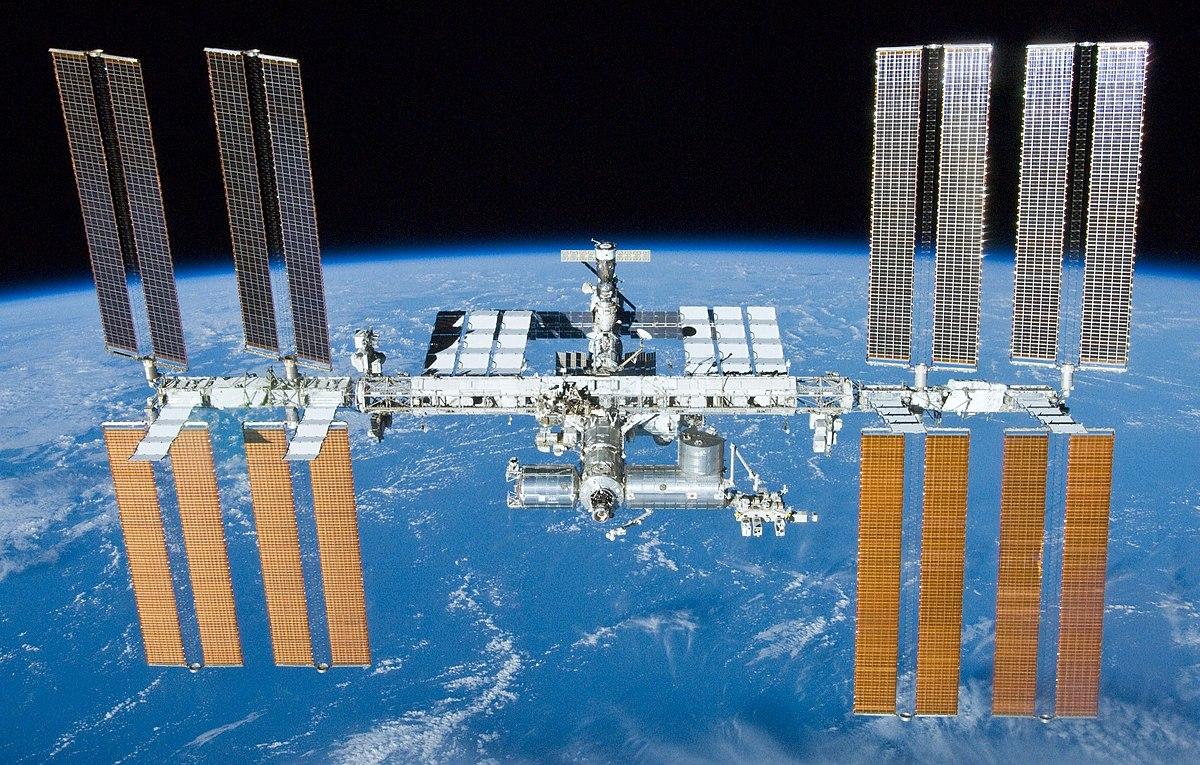
Date:
Updated April 27, 2020
Looking for something unique to do with your spare time? Become an ISS spotting expert! All you need is your phone and a place to view from – your backyard, your front step, a nearby intersection – but no telescope. This is almost exclusively a ‘naked eye’ experience to be done only when the sky is clear. Share this information with your family across the region, then do it together as a group!
Here’s when to look. Timing is specific to the Philadelphia region.
Space Station Fly-overs for the Philadelphia region, April 27 – May 1:
• Tuesday April 28: Appears 4:44a in the southwest, reaching 68 degrees elevation, heading toward the NE, gone by 4:50a.
• Thursday April 30: Appears 4:45a in the west, reaching 42 degrees elevation, heading toward the northeast, gone by 4:50a.
• Friday May 1: Appears 3:59a almost overhead, 70 degrees elevation; heading toward the NE, gone by 4:04a.
Here’s how it works:
ISS flies over Philadelphia at least 4 times a day and as many as 7 times a day, all because of how the station orbits and how the Earth turns underneath the orbit. The orbit is a circular path around the Earth, as the earth turns under the station, ISS orbits Earth seeing different portions of Earth on each orbit. The orbital period – the time it takes to complete one orbit – is about 92 minutes. Sometimes if conditions are right you can see two passes in one evening or morning.
Space Station is only visible when it’s illuminated by sunlight. During the day, the sky is too bright to see it and as we look up late at night, ISS flies through Earth’s shadow so there’s no sunlight falling on the station for us to see it. There are two daily time windows when the station is visible: morning and evening twilight – the period just before sunrise and the period just after sunset. This when the background sky is dark enough but ISS is still catching enough light from the sun for us to see it.
ISS orbits at an altitude of about 250 miles and flies along at 17,500 miles an hour. The passes, called fly-overs, can last from under two minute for a short pass to just under 8 minutes for a full flight from horizon to horizon.
Space Station appears as a bright dot about the brightness of the planet Venus. It moves steadily across the sky getting brighter as it comes closer to your position. It has no flashing lights like an airplane. It’s odd to say this, but it doesn’t make a sound. Of course not, it’s 250 miles up! Even though it’s the size of a football field, don’t expect to see any details, it’s too far away. What happens when it disappears as you’re viewing? It crosses into earth’s shadow! No sunlight shining on it, so we can’t see it.
Where to find the fly-over information:
I’ve listed resources below but my favorite is https://www.heavens-above.com/.
It’s a bit challenging to use the first time but it gives more complete information that any other site. The smartphone app SkySafari Plus also provides satellite observing information along with simulated sky views but it doesn’t easily show future fly-overs like Heavens-Above does.
And that’s it! After 4 sightings you’ll catch the drift of how this works and you can begin to dig for more information about Space Station operations and the crews onboard. You can even begin looking for other visible satellites and there are plenty of them, although ISS is the one best seen under city sky conditions. I’ve seen ISS from Broad and Spruce, 30th and Market, as well as from the Franklin.
Remember, you can do this from your own neighborhood, just find a spot to view from where you have the most open sky to see.
And be sure to stay 6 feet from your neighbor and don’t stand under a street light!
Want to learn more? Check out these resources:
https://www.heavens-above.com/
https://www.nasa.gov/mission_pages/station/main/index.html
https://spotthestation.nasa.gov/
https://www.space.com/8876-international-space-station-numbers.html


